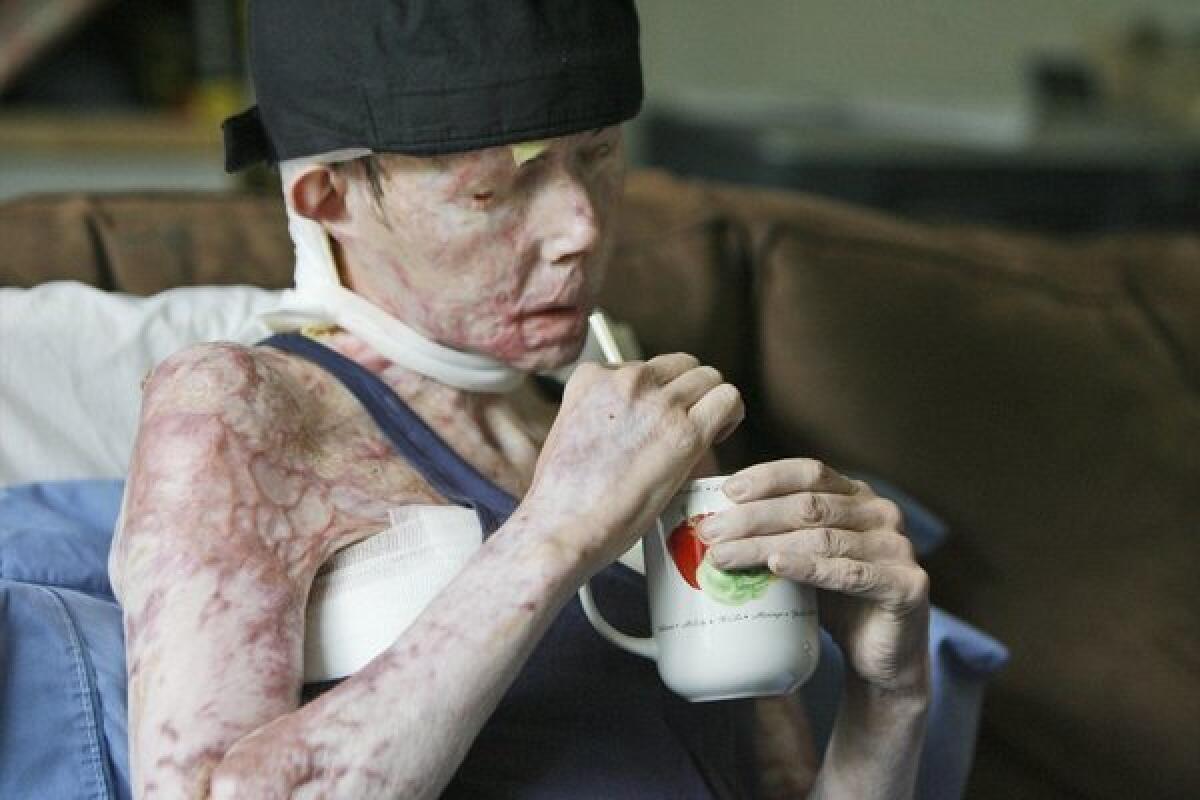Face transplant recipient ‘in great spirits’ after operation

They’re not exactly routine, but face transplants are becoming more common.
The latest to be announced, on Tuesday at Brigham & Women’s Hospital in Boston, involved a former transplant nurse whose husband tossed industrial-strength lye on her during a brutal assault in 2007. (He’s in prison for more than 30 years.)
Carmen Blandin Tarleton had chemical burns over 80% of her body when she arrived at the hospital, where she was put in a medically induced coma for three months. She emerged severely disfigured and legally blind, according to the hospital.
The 44-year-old Thetford, Vt., woman has undergone numerous surgeries since. During a 15-hour operation this month, surgeons transplanted a female donor’s facial skin, including the neck, nose, lips, facial muscles, arteries and nerves, according to a statement from the hospital.
More than 30 physicians and other medical personnel participated in the procedure, the fifth to be performed at the Harvard-affiliated hospital.
“I feel great appreciation and gratitude for the tremendous gift I’ve been given,” Tarleton said in a statement read by her sister. “This greatly improved my quality of life and comfort level… My spirits are high.”
The date of the surgey was not revealed, in part to protect the anonymity of the donor.
Dr. Bohdan Pomahac, team leader of the surgery and the hospital’s chief of plastic and reconstructive surgery, said that when Tarleton arrived at the hospital after the attack, “our expectations for Carmen’s survival were low. But Carmen is a fighter, and fight she did.”
As a transplant nurse, Tarleton knew the risks and struggles involved and faced them with vigor, Pomahac said. She was “one of the most inspirational people I have ever met,” he said.
“Carmen is recovering very well,” Pomahac said. “She is in great spirits. She is working hard to get stronger. … She’s tough. She’ll do what needs to be done. She wants to live her life to the fullest.”
Pomahac did not rule out the possibility that Tarleton could return to nursing. It will take about 3 to 6 months for her to begin regaining some sensation and motor control, and a year or more for her to reach about 75%-80% of normal function, the level that previous transplant recipients typically have achieved, he said.
As is the case in previous transplants, Pomahac said, “there is really no transfer of appearance from donor to recipient.”
Tarleton, who has had eye surgery, was able to glimpse the results of the surgery, Pomahac said. “She was very pleased” when she saw her restored face, he said. “I think she looks amazing, but I’m biased.”
The first facial transplant in the U.S., and fourth in the world, was performed in 2008, when a woman being treated at the Cleveland Clinic received an almost entirely new face.
Brigham and Women’s claims a place in history as the first facility to perform a full face transplant on Dallas Wiens, in March 2011.
A month later, a team at the hospital replaced the full facial area of Mitch Hunter, 30, of Indiana, including the nose, eyelids and many muscles and nerves. Hunter suffered a severe shock from a high-voltage electrical wire after a car accident in 2001.
Last year, Richard Lee Norris, a 37-year-old Virginia man who was disfigured in a gun accident and had worn a mask for 15 years, received a full face transplant at the University of Maryland Medical Center. During 36 hours of surgery, he received a new face, nose, teeth and jaw, according to the hospital.
Return to the Booster Shots blog.




